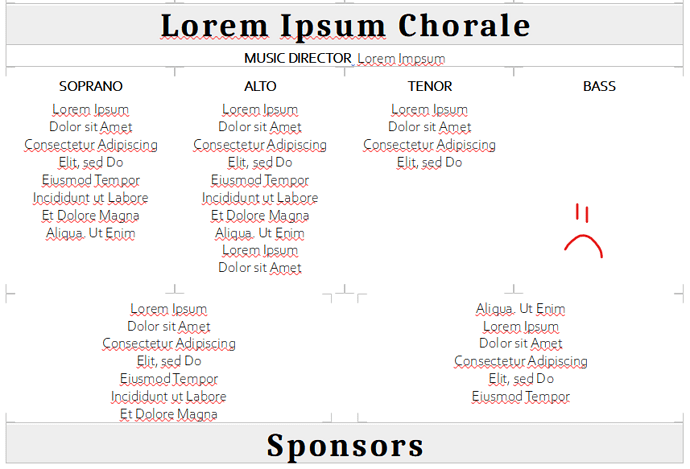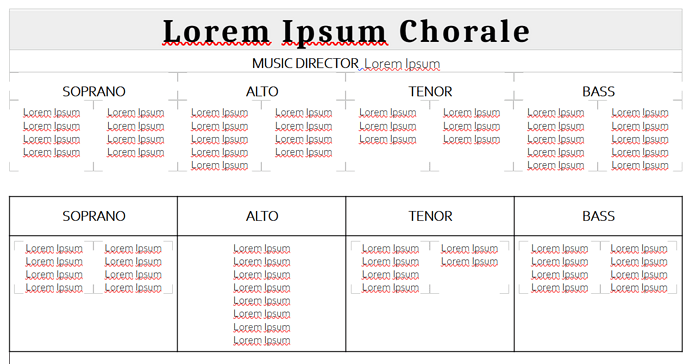You used the wrong tool.
The Writer section targets newspaper columns where text flows continuously from one column to the next when some limit is met (usually bottom of page). In your example, columns are independent from each other and should not be mixed. To achieve your design you must insert manual column breaks. Manual interaction with automatic features is always the cause of later difficulties when tuning the layout.
The second misunderstanding is section behaviour (don’t feel guilty, it is only recently that I realised how it really worked). A section changes the number of columns relative to the current layout base "object (page, table cell or frame). This implies that sections can’t be constrained to a column of another section.
Even if the section is structurally nested inside another one, it extends geometrically from page margin to page margin, though the relationship with the original column remains. Note however that the nested section results in a dramatic change in layout if it is not set in the last column.
If you’re reluctant to use a DTP program as suggested by @Hrbrgr, the solution is a table. Each cell is an independent “sub-document”, consequently there is no risk that the Alto cell spills over into the Tenor cell. And what I didn’t know because I never tested it before, you can insert a 2-column section into a table cell. The section will be constrained to the cell.
EDIT
As my answer doesn’t seem clear, here is my recommendation:
Create a 4-column table for your singers. Each cell is an independent sub-document. As such, you have a title paragraph with its own style (bold, centered, spacing below). Below it, your singers have their own paragraph style.
When the number of singers is large, insert a 2-column section below the title. The number of singers will be balanced between column if you request it so (enabled by default).




 I’ve had it drilled into me not to use tables for layout (but rules at times are meant to be broken, haha). But, as described above, one downside is this cannot nicely replicate what the Alto section is doing in the table (i.e., different number of columns per vocal group) as the columns in the section will be distributed evenly across the section (and I’d like to avoid manually specifying column widths. In that way, the table is better because it appropriately defines a relationship between the singers and their respective header.
I’ve had it drilled into me not to use tables for layout (but rules at times are meant to be broken, haha). But, as described above, one downside is this cannot nicely replicate what the Alto section is doing in the table (i.e., different number of columns per vocal group) as the columns in the section will be distributed evenly across the section (and I’d like to avoid manually specifying column widths. In that way, the table is better because it appropriately defines a relationship between the singers and their respective header. 